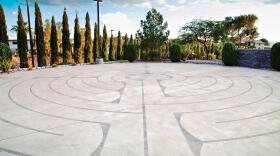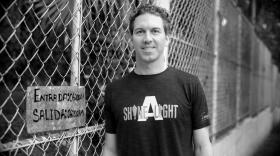• Shakeh Ghoukasian knew she was doing something right as a violin instructor when a high-powered federal lawyer thanked her. The lawyer was a former student she’d taught more than a decade earlier. “He said to me, ‘I have to tell you, yours was the one class where I had to really come and deliver, where I had to have the work done, where I couldn’t wing it. It really helped me get through law school, because I had to do my depositions in the same way.’ It reminded me that learning an instrument really instills a lifelong sense of discipline.”
• Ghoukasian is dean of the Nevada School of the Arts ( nsamusic.org), a small, private nonprofit music instruction school downtown. The myth: It’s an elite institution for bow-waving string savants or snobby piano wunderkinds. “Because our students do so well, we are thought of as elite,” says Ghoukasian, also principal second violinist for the Las Vegas Philharmonic. “That’s an image we’ve been trying to dispel.” The reality: It’s a small but sharp music instruction school that, they like to say, welcomes everyone from age 4 to 94. “Anyone can come. There are no auditions. We welcome all socioeconomic backgrounds.” And they embrace instruments that fall well outside what you’d find in an orchestra: Brazilian drum camp, anyone?
• Originally chartered in 1977, the school has bumped around town for decades, until recently settling at the Historic Fifth Street School. “We’ve always been at somebody else’s doorstep, but we’re finally establishing an identity here. We’ve been a best-kept secret for the longest time, and now we want to let people know we’re here.” (Hear what they’ve been up to 7 p.m. May 10, when students join pros for their “Musical Crossroads” concert at the Historic Fifth Street School.)
• Ghoukasian began her studies at age 6 at the Tchaikovsky School of Music in Yerevan, in then-Soviet Armenia. “The instruction style is very stern and formidable,” she says. “They don’t really look at individual students. You’re part of a bigger picture. Oh, the teachers were wonderful, but the overall system is very strict.” She continued her instruction when she immigrated to the U.S. at 16, discovering a teaching method that prized the individual. “I learned you can still be very disciplined, very demanding, but also have incredible humanity.”
• The Nevada School of the Arts embraces a “very loving yet very precise” Suzuki Method, which favors nurture over nature. “I think talent is overrated,” Ghoukasian says. “We as humans tend to peg people as creative or with a natural ear for music, but students have proved me wrong on that thinking so many times. If the opportunity is given and the environment is right, most human beings have the ability to do things that are beautiful.”
• “I tell parents of new students that it requires tolerating a certain noise level when they’re beginning because, let’s face it, it’s really not beautiful when they’re starting out,” she says with a laugh. “But when that moment comes when the student finds the tone, or something clicks, or there’s that perfect coordination of brain and hand — that’s just a really joyous moment.”








